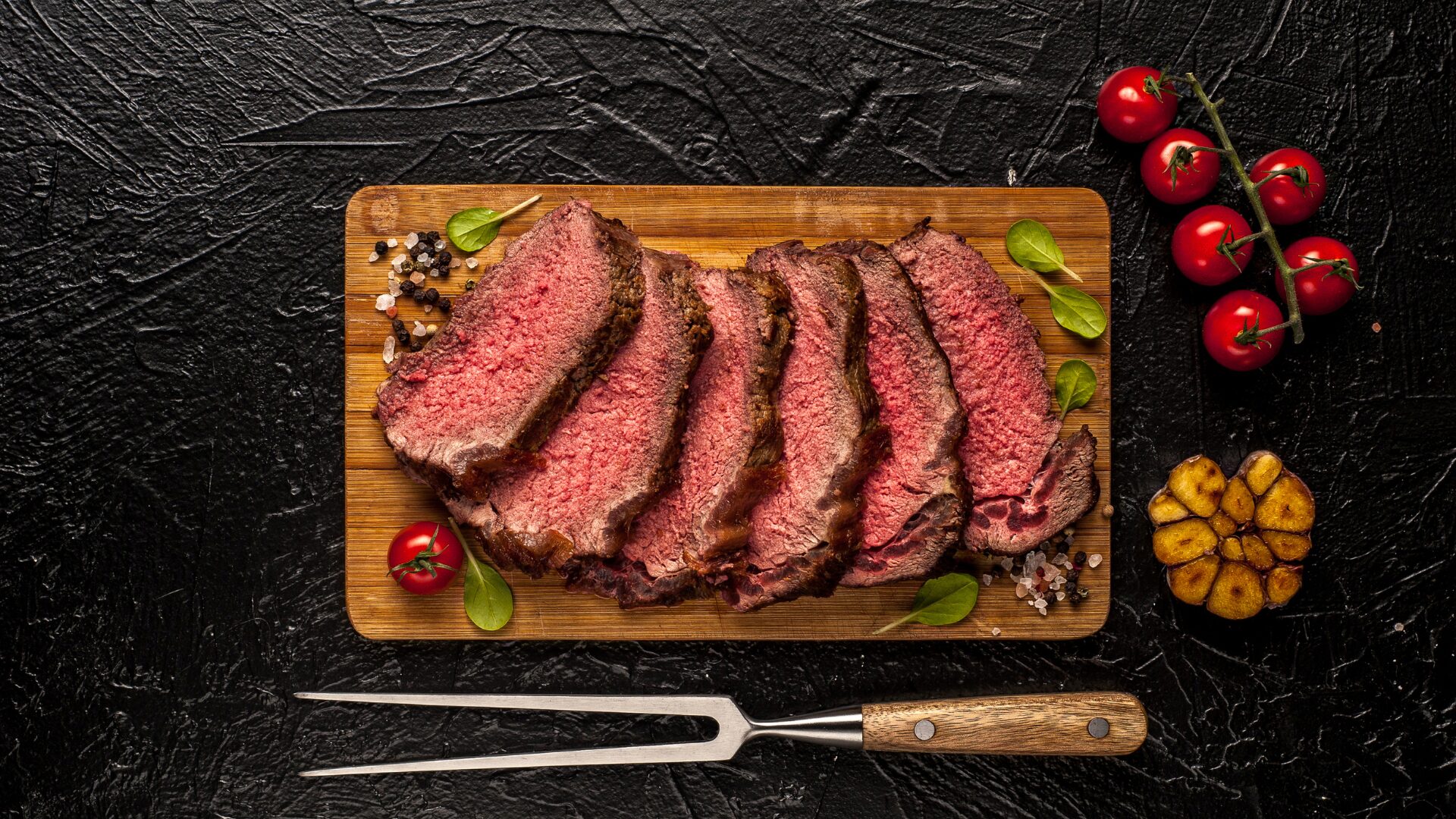It is an expensive time to be a carnivore with beef prices surging.
Retail beef prices are sizzling despite an overall (and very much welcomed) downturn in the overall prices of food as the holidays approach. The Wall Street Journal reported that food sold on promotion in grocery stores has reached a four-year high despite the fact consumers are growing more cautious as U.S. food sales by unit are down 2% compared with this time last year, per NielsenIQ data.
Unfortunately those benefits are largely bereft from the beef market, prompting the onset of the meat sweats for consumers, beef farmers, and CEOs. A diminished cattle supply combined with higher input costs at farms and ranches around the country are pushing most cuts of meat to record levels—around $8 per pound according to data from the USDA. Fifty-two week data from Circana shows category volume sales of beef in the grocery aisle are down 1.2% from one year ago.
Though prices typically ebb and flow in the beef market over time, the overall trend is only pointing in one direction.
“Relative to other proteins, beef prices are likely to stay elevated for the next couple of years due to tighter supplies,” said Courtney Schmidt, Wells Fargo Agri-Food Institute sector manager, to The Food Institute.
“It’s economics 101—either a change in demand or supply needs to happen to ease beef prices. The supply situation isn’t expected to improve until 2025 as drought conditions continue in many states and the herd rebuilding takes time. Higher beef imports will help ground beef supplies but won’t be able to offset shortage of premium beef cuts.
“Demand is the wild card. If economic conditions worsen, consumers are more likely to switch to cheaper beef cuts or less expensive proteins such as chicken or pork.”
Prolonged high beef prices could also cause shifts in foodservice menu items with less beef featuring. This could eventually lead to lower demand and a softening of beef prices.”
Ten-year averages of the price per beef were lowest in 2013 at around $5 per pound, spiked in the spring of 2020 due to the pandemic to over $7.50 per pound, and are now breaching $8 per as cattle herds in the U.S. are at their lowest numbers in decades due to substantial and prolonged drought in key cattle states like Texas, Kansas, and Missouri.
To build the herd, ranchers must keep the herd and slaughter less cows to prepare for future seasons, driving supply down. As labor strikes and driver shortages have ravaged shipping and distribution for many suppliers, the costs to move that diminished supply have been pushed onto farmers and down into the consumer economy. Meanwhile, hay supplies were hit by intense drought in 2022 as dry hay stocks dwindled to almost 70-year lows at 71.9 million tons, when the average price of a pound of sirloin was just 61 cents.
Per the USDA, both cattle slaughter and beef production in September was down 10% from 2022.
Having Your Steak (and Eating It, Too)
Wait a second—isn’t the ongoing better-for-you trend and focus on transparency in American diets leading to less beef consumption? Aren’t the plethora of plant-based alternatives and burgeoning cell-cultured meat industry pushing consumers to think about the land, the planet, and their own bodies and healthcare and resulting in small but quantifiable reductions in average beef consumption per capita?
Nope. Not even close, and that’s been the narrative for more than half a century. The U.S. by far consumes the largest amount of beef at almost 13 million metric tons, followed by China at 8.4 million tons. And though beef and red meat consumption peaked in the 70s, the average American eats about 57 pounds per year, second only to Argentina worldwide per capita.
So who’s eating all the beef, and will they continue to do so despite higher prices?
The answers, in short, are mostly senior white men, and probably. A recent joint study from prominent American universities revealed that it’s just a small amount—about 12%—of people who account for almost half of the beef consumed in the U.S. on any given day. Men between the ages of 50 and 65 were, in the researchers’ terms, “disproportionate beef eaters” who eat more than four ounces (or about one hamburger) per day based on the study of over 10,000 adults over a four-year period.
Schmidt added that restaurant owners can take advantage of meat eaters when seasonal price patterns and value opportunities arise between various beef cuts. “For example, wholesale prices for loin and flank primals have softened in recent months,” she added, “while the ribeye primal remains in a higher price pattern.”
So, like a cow in the rain, beef endures as neither an on-trend cuisine for 2024 nor as a delicacy reserved only for the bourgeoisie. In the short term, however, beef prices will remain high and pressure ranchers, restaurateurs, and most of all consumers until cattle numbers swell, input costs diminish, the economic storm abates, and the cows come home.
The Food Institute Podcast
The Latin population in the U.S. is growing, and the influence of Latin cuisine is gaining prominence alongside it. How does this impact the U.S. food and food retail sectors as a whole? Aurora Grocery‘s Omar Jorge and City National Bank‘s Eric Viergutz help break down this dynamic and discuss the different cohorts who are gravitating towards Latin cuisine.












